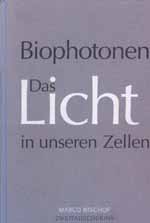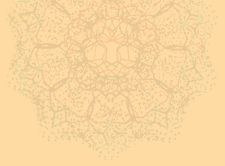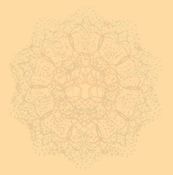| Biophotonen |
||

|
Die weltweit erste und allgemeinverständliche Gesamtdarstellung der Biophotonenforschung.
Physiker entdecken Wir sind Lichtwesen Das Licht in unseren Zellen |
|
|
Short description Marco Bischof’s widely acclaimed book has already sold some 38’000 German-language copies (12th printing) since its publication in March 1995, and the success is continuing. It is the first comprehensive book on the world market for the general and scientific public on one of the hottest fields of frontier science which is about to lead to major conceptual breakthroughs and many useful applications in biophysics, biomedical science, biology, biotechnology, environmental science and food technology. Thousands of medical doctors, scientists, and interested laypersons in Germany, Switzerland and Austria who from the many newspaper and magazine articles and from several TV features in the last couple of years were aware of this development of potential breakthroughs in a number of scientific disciplines and wanted to obtain more precise and broadly accessible information, have been waiting for this book that will remain the definitive publication on the topic for many years to come. Russian and Chinese translations are in preparation. The book has been awarded the 1995 Book Price by the Scientific and Medical Network (U.K.) and the Swiss Award 1997 by the Swiss Parapsychological Foundation. What are biophotons ? Biophotons, or ultraweak photon emissions of biological systems, are weak electromagnetic waves in the optical range of the spectrum - in other words: light. All living cells of plants, animals and human beings emit biophotons which cannot be seen by the naked eye but can be measured by special equipment developed by German researchers. This light emission is an expression of the functional state of the living organism and its measurement therefore can be used to assess this state. Cancer cells and healthy cells of the same type, for instance, can be discriminated by typical differences in biophoton emission. After an initial decade and a half of basic research on this discovery, biophysicists of various European and Asian countries are now exploring the many interesting applications which range across such diverse fields as cancer research, non-invasive early medical diagnosis, food and water quality testing, chemical and electromagnetic contamination testing, cell communication, and various applications in biotechnology. According to the biophoton theory developed on the base of these discoveries the biophoton light is stored in the cells of the organism - more precisely, in the DNA molecules of their nuclei - and a dynamic web of light constantly released and absorbed by the DNA may connect cell organelles, cells, tissues, and organs within the body and serve as the organism’s main communication network and as the principal regulating instance for all life processes. The processes of morphogenesis, growth, differentiation and regeneration are also explained by the structuring and regulating activity of the coherent biophoton field. The holographic biophoton field of the brain and the nervous system, and maybe even that of the whole organism, may also be basis of memory and other phenomena of consciousness, as postulated by neurophysiologist Karl Pribram an others. The consciousness-like coherence properties of the biophoton field are closely related to its base in the properties of the physical vacuum and indicate its possible role as an interface to the non-physical realms of mind, psyche and consciousness. The discovery of biophoton emission also lends scientific support to alternative and unconventional methods of healing based on concepts of homeostasis (self-regulation of the organism), such as various somatic therapies, homeopathy and acupuncture. The „ch’i“ energy flowing in our bodies’ energy channels (meridians) which according to Traditional Chinese Medicine regulates our body functions, may be related to node lines of the organism’s biophoton field. The „prana“ of Indian Yoga physiology may be a similar regulating energy force that has a basis in weak, coherent electromagnetic biofields. Background First discovered in 1923 by Russian medical scientist Professor Alexander G.Gurvich (who named them „mitogenetic rays“) and in the 1930s widely researched in Europe and the USA, biophotons have been rediscovered and backed since the 1970s by ample experimental and theoretical evidence by European scientists. In 1974, German biophysicist Fritz-Albert Popp has proved their existence, their origin from the DNA and later their coherence (laser-like nature), and has developed biophoton theory to explain their possible biological role and the ways in which they may control biochemical processes, growth, differentiation etc. Popp’s biophoton theory leads to many startling insights into the life processes and may well provide one of the major elements of a future theory of life and holistic medical practice based on such an approach. The importance of the discovery has been confirmed by eminent scientists such as Herbert Froehlich and Nobel laureate Ilya Prigogine. Since 1992, the International Institute of Biophysics, a network of 22 research laboratories in 14 countries, based in Germany, is coordinating research in this field which promises rapid development in the coming decade (see http://www.lifescientists.de). Aims of the book To date the few books about biophotons have been highly technical and being addressed only to a scientific public. Not even among these, there was any single book integrating all that is known today about this fascinating field of science which is likely to become soon a much discussed topic also in the English-speaking world. The author, who in 1994-95 has served as Managing Director of the International Institute of Biophysics at Neuss (Germany) and still is a member of the Board of Directors of this institute, has been involved in biophoton research since 1977 and so was predestined to write the first comprehensive account of the subject ever made. His aim was to reach a wider public among scientists, medical doctors and the scientifically aware. The book which embeds the more technical parts in a popular treatment of the historical antecedents of the concept of „energy bodies“, „life energies“ and biolectricity, and to the ages-old scientific controversy between vitalistic and mechanistic trends in biology and medicine, also appeals to a general readership interested in new developments in the biological and physical sciences and in medicine and in their connections with consciousness research and New Age ideas. The Author Marco Bischof was born in Switzerland in 1947 and is a leading scholar, science writer and consultant in frontier areas of science and holistic medicine in the German-speaking countries. He has published a number of scientific papers and has been a regular contributor to many popular magazines in Germany (e.g. Esotera, Sphinx, Bioenergetik, German OMNI, German Penthouse) and abroad. He has studied cultural and medical anthropology and comparative religions at Zurich University, has been a member of the research council of the Laboratory of Biophysical Balneology at Zurzach, Switzerland, from 1990 to 1992, and of the board of directors of the International Institute of Biophysics at Kaiserlautern and Neuss, Germany, since 1992. 1992-1994 he has served as Director of the Institute for Synthesis, Coordination and Documentation (ISCD) at Biberist, Switzerland. In 1992 he was visiting scholar at the Center for Frontier Sciences, Temple University, Philadelphia. From December 1994 to December 1995 he has served as Managing Director of the International Institute of Biophysics at Neuss, Germany. From December 1995 to 1998 he has been a scientific consultant to the „Patienteninformation für Naturheilkunde“, a company offering documentation, research and consulting in complementary medicine and the frontier sciences. He is now living in Berlin as an independent scholar, science writer and consultant. At present he is preparing a review on unconventional technologies for the German government and has just published a book on the controversial topic of "subtle energies". He is a full member of the Scientific and Medical Network (U.K.) and the Society for Scientific Exploration (USA). Selected Publications
What the critics have said about his work „Sober, rich in material and well written, the book contains any amount of explosives for engrained notions. To me it is one of the most important books of the last several years“ (Hans-Curt Flemming in Connection Magazine (Germany), on „Biophotons“). „The book is a must for any leading edge scientist or researcher or alternative specialist who wants a scientific overview, and seeks to understand the variety of theories or possible explanations for a part of reality which has just begun to be measured - the interface between the material world and virtual reality. (...) We consider the book a work of reference with regard to the New Paradigm of science and philosophy in general and specifically with regard to the exciting area of biophoton research. (...) The biophoton theory may be one of the links between spiritual and esoteric empiricism and the New Paradigm science. (...) We find the book enlightening and recommendable. It provides scientific foundation for the developing New Paradigm within the sciences. The book is a treasure of information and details, rich in illustrations, and the glossary contains definitions of concepts normally difficult to define. This book was awarded the SMN Book Price in 1995 - an obvious choice“. (Ole and Suzette van Hauen-Drucker, in The Scientific and Medical Network Review (U.K.), No.62, December 1996, on „Biophotons“). „A fascinating and unique book which does not fit into any current scheme“ (Christian Bachmann, in Tages-Anzeiger, Zürich, Switzerland, on „Biophotons“) „A spirited and highly interesting discourse“ (Dennis Stillings in Artifex (Minneapolis) on „Unsere Seele kann fliegen“). „Marco Bischof disposes of a language that through its simplicity makes complex relationships accessible also to the layman“ (Bruno Kesseli in Limmat-Zeitung (Switzerland) on „Unsere Seele kann fliegen“). „Marco Bischof belongs to a tradition mainly found in Anglo-Saxon writing whose most known representative is maybe Arthur Koestler. Like Aldous Huxley, and today Colin Wilson or Robert Anton Wilson, he soberly investigates border areas of rationality without abusing cheap catchwords or neboulous expectations. What characterizes these authors is the ability to present difficult scientific concepts in a simple way without misrepresenting them. By proceeding and thinking in an interdisciplinary way, they arrive at surprising and new insights. Marco Bischof’s book is a good exemple of this“ (Guido Stefani in Luzerner Neuste Nachrichten and Badener Tagblatt (Switzerland) on „Unsere Seele kann fliegen“). |
||




